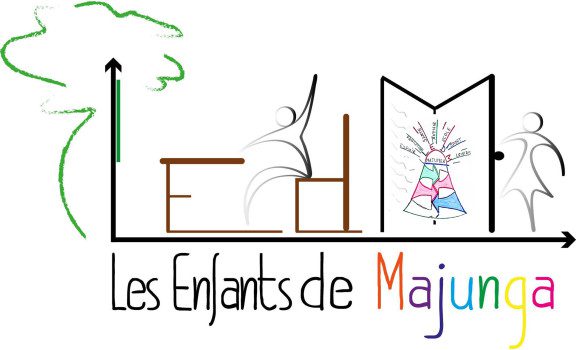Marshal Neal Fettro
step 1 Service out of Sociology and Cardio to own Nearest and dearest and Demographic Browse, Bowling Eco-friendly State School, Williams Hallway, Bowling Environmentally friendly, OH 43403, U . s ..
Conceptual
Cohabitation possess exceeded marriage as the most well-known commitment knowledge of younger adulthood. I capitalize on another chance to see each other ong more youthful solitary feamales in has just obtained, around the world member research (Federal Survey out of Family relations Growth 2011-2015) (n=1,467). On the You.S. there is apparently a great ‘stalled’ Second Group Transition once the solitary young mature (ages 18-24) feminine enjoys healthier standards to help you wed than cohabit and big most expects so you can, or enjoys, currently ong ladies expecting to get married, almost all (68%) anticipate to cohabit employing future partner however, from the you to definitely-third expect you’ll go after a timeless relationship pathway with the matrimony (in order to get married rather than cohabiting very first). While doing so, feminine out-of disadvantaged backgrounds statement a low standard in order to wed, but there is however no degree gradient when you look at the standard to help you cohabit. Marriage criterion pursue a “diverging destinies” development, which anxieties an ever-increasing educational separate, however, this is simply not the actual situation to own cohabitation standard. Our very own performance, considering recently accumulated study, give insight into the brand new modern perspective off partnership formation decision-and also make toward millennial age bracket.
Cohabitation has surpassed marriage since typical relationship experience in younger adulthood, into the most which have cohabited but not yet ). Before, cohabitation generally supported as a stepping stone to matrimony. This seems to have changed. Now cohabitation cannot mostly act as the trail in order to idi, Manning, and Brown 2015). Near to it “decoupling” away from cohabitation and you can matrimony, broadening shares from young people have lived having multiple cohabiting people (Vespa 2014).
One of many theoretic architecture familiar with learn historical change in-marriage and you will cohabitation ‘s the 2nd Demographic Transition (SDT); they posits one to ideational otherwise cultural factors are fundamental vehicle operators away from family unit members change next to monetary and you may structural shifts (Lestheaghe 2014). Because the behavioural changes listed significantly more than is similar to the SDT, an essential tenet out of SDT is dependant on ashift when you look at the ideations or public norms favoring loved ones lives outside of relationship. Research out-of exclusively behavioural analysis will bring simply a small contact lens of where we have been culturally regarding family unit members life and you can intimate relationships, and you may, particularly for this lookup, the partnership ranging from cohabitation and you will wedding. While the really young people haven’t but really partnered, behavioural investigation are minimal to possess understanding observed website links anywhere between cohabitation and relationship. Additionally, since the cohabitation is normally a rash ; Manning mais aussi al. 2014a; Sassler 2004; Sassler ainsi que al. 2018), behavioral procedures are arguably imperfect symptoms regarding matchmaking preferences.
Concurrently, family relations improvement in the brand new U.S. has been classified given that “diverging destinies,” a standpoint who may have catalyzed a great amount of lookup. Just like the articulated of the McLanahan (2004), there clearly was an ever-increasing social classification divide inside the relatives activities. I determine if a personal category gradient is present when it comes to partnership formation expectations. Considering research you to definitely young people perceive a leading financial club getting matrimony, we assess if or not more youthful ladies’ relationship traditional differ from the socioeconomic situations, with higher requirement to help you marry by really advantaged and you may deeper expectations so you can cohabit among the least advantaged (Gibson-Davis, Edin, and you will McLanahan 2005; Gibson-Davis, Gassmann-Pines, and Lehrman 2018; Sassler and you will Miller 2017; Smock, Manning, and you will Porter 2005).
Understanding the choices of recent cohorts out-of teenagers try ergo vital getting gauging the current ideational perspective related partnership development. So far, no investigation possess investigated the relationship and you can cohabitation expectations of young people. Drawing for the the newest inquiries off a nationwide associate https://swoonbrides.net/tr/blog/yabanci-kadinlarla-nasil-tanisilir/ survey (National Survey of Household members Gains [NSFG] 2011-2015), we look at the one another cohabitation and you will marital traditional to enhance knowledge about young ladies’ connection creation needs. Our work especially takes into account the newest hopes of unmarried (i.elizabeth., maybe not cohabiting otherwise married) women (18-24) who are members of the new after millennial cohort (produced 1987-1997). We have three aims. The first explores how matrimony and you may cohabitation “rank” when it comes to requested relationships futures by evaluating if or not standard to help you get married are similar to those people to help you cohabit. It question is highly relevant to the latest SDT theory, that will assume you to definitely relationship and you will cohabitation was likewise questioned by teenagers. Instead, good “stalled” SDT might possibly be evident when the requirement in order to marry will still be more than requirement to help you cohabit. A moment point is to have a look at whether more youthful ladies requirement to own matrimony other individuals into looking to cohabit. That is, focusing on people who anticipate to ine whether cohabitation are viewed given that a pathway on relationships or whether or not direct relationship versus cohabitation is anticipated. If quite a few of be prepared to cohabit on the solution to matrimony, this could be similar to the SDT. Fundamentally, i assess if or not such matchmaking standards try in line with diverging destinies, meaning they are very different by the societal group with an increase of advantaged teenagers revealing greater criterion so you can marry and much more disadvantaged claiming greater standards in order to cohabit than its counterparts.
